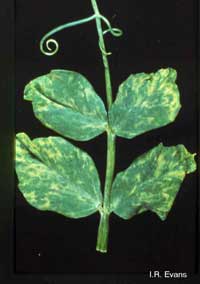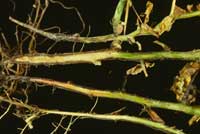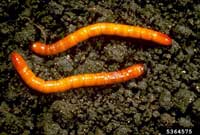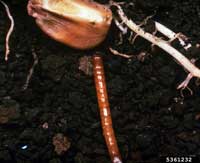Extension > Garden > Diagnose a problem > What's wrong with my plant? > Vegetable > Peas > Stunted plant
Peas > Whole plant > Stunted plant
1 of 4
Virus
Red clover vein mosaic virus (RCVMV), Bean yellow mosaic virus (BYMV)
- Leaf veins turn yellow or white
- Leaves have a yellow to white mottled or mosaic pattern
- Plant may be stunted
- The number and size of pods can be reduced, pods may be malformed
- Premature death of plant may occur
- More information on Virus
2 of 4
Aphanomyces Root Rot
Aphanomyces euteiches
- Pea shoots are yellow, stunted and may wilt
- The stem is brown and soft at the soil line
- Roots have brown soft rotten spots
- Most common in heavy wet soils
3 of 4
Wireworms
Agriotus spp., Melanotus spp.
- Wireworms feed on seed, which can prevent germination
- Plants may be stunted
- More common in gardens that were previously in grass or sod
- Larvae are thin, shiny, segmented , yellow to reddish-brown color, and approximately 1/4 to 1 ½ inch long and can be found throughout the growing season
- More information on Wireworms
4 of 4
Aphids
Acyrthosiphon pisum, Aphis fabae
- Minor to moderate feeding on leaves does not cause any noticeable symptoms
- Large numbers feeding on leaves can cause wilting or death of plant
- Feeding on pods can cause them to curl, shrink, and partially fill
- Plant may be stunted








